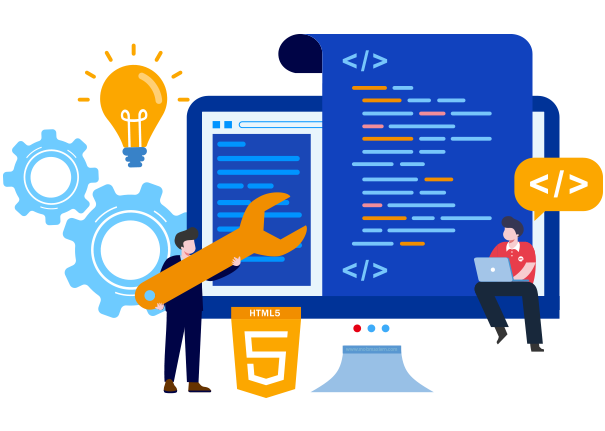Index Surge: Amplifying Your Insights
Stay updated with the latest trends and news across various industries.
HTML5 Development: The Silent Revolution in Web Design
Uncover the game-changing impact of HTML5 in web design and why it’s a revolution you can’t afford to ignore!
Understanding the Key Features of HTML5: How It Transformed Web Design
HTML5 has significantly transformed web design by introducing a range of new features that enhance both the functionality and the user experience of websites. Key features include semantic elements such as <header>, <footer>, and <article>, which provide a clearer structure to web content. This allows search engines to better understand and index your content, improving SEO results. Additionally, the introduction of multimedia support through tags like <video> and <audio> enables rich media integration without the need for third-party plugins, enhancing site performance and accessibility.
Moreover, HTML5 offers Canvas and SVG elements, empowering developers to create dynamic graphics and animations directly in the browser. These tools revolutionize the way interactive content is delivered, making websites more engaging. With built-in form controls and the Web Storage API, HTML5 also enhances user interaction by allowing for better data management and reduced server load. As a result, these key features not only improve the aesthetics of web pages but also contribute to a more efficient and user-friendly online experience.

How HTML5 Enhances User Experience: The Benefits for Developers and Designers
HTML5 has revolutionized the way developers and designers create websites, significantly enhancing user experience. With features like semantic elements, developers can create more meaningful and accessible content while improving search engine optimization (SEO). New elements such as <header>, <footer>, and <article> provide a clear structure and hierarchy for content, making it easier for users to navigate. Moreover, HTML5 supports multimedia embedding without the need for additional plugins, allowing developers to integrate audio and video seamlessly, thus enriching the overall UX.
In addition to improving accessibility, HTML5 brings a host of new APIs that enable developers to create more interactive and dynamic web applications. For instance, the Canvas API allows for real-time graphics and animations, and the Geolocation API provides the ability to track users' locations for personalized experiences. By incorporating these powerful tools, designers can craft visually appealing and engaging interfaces that not only captivate users but also keep them returning for more. Ultimately, HTML5 not only enhances the user experience but also empowers developers and designers to push the boundaries of web development.
Is HTML5 the Future of Web Development? Exploring Its Impact on Modern Websites
As we delve into the realm of web development, one question looms large: Is HTML5 the future of web development? Launched in 2014, HTML5 revolutionized the way developers create and manage websites. It introduced a plethora of new features including native support for audio and video, enhanced graphics capabilities with Canvas, and the ability to create rich applications without relying on third-party plugins. These advancements not only streamline the development process but also facilitate modern websites that are more interactive and user-friendly.
The impact of HTML5 on contemporary web development is undeniable. It enables developers to build responsive websites that function seamlessly across various devices, from desktops to smartphones. Furthermore, HTML5's integration with CSS3 and JavaScript has paved the way for more dynamic user experiences. With its robust set of APIs and the ongoing support from major browsers, HTML5 is poised to remain at the forefront of web innovation. As we look to the future, it is clear that embracing HTML5 is not just an option but a necessity for developers aiming to create engaging and accessible web experiences.